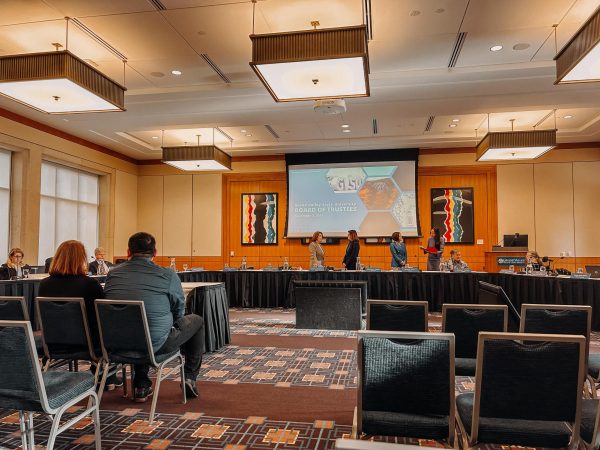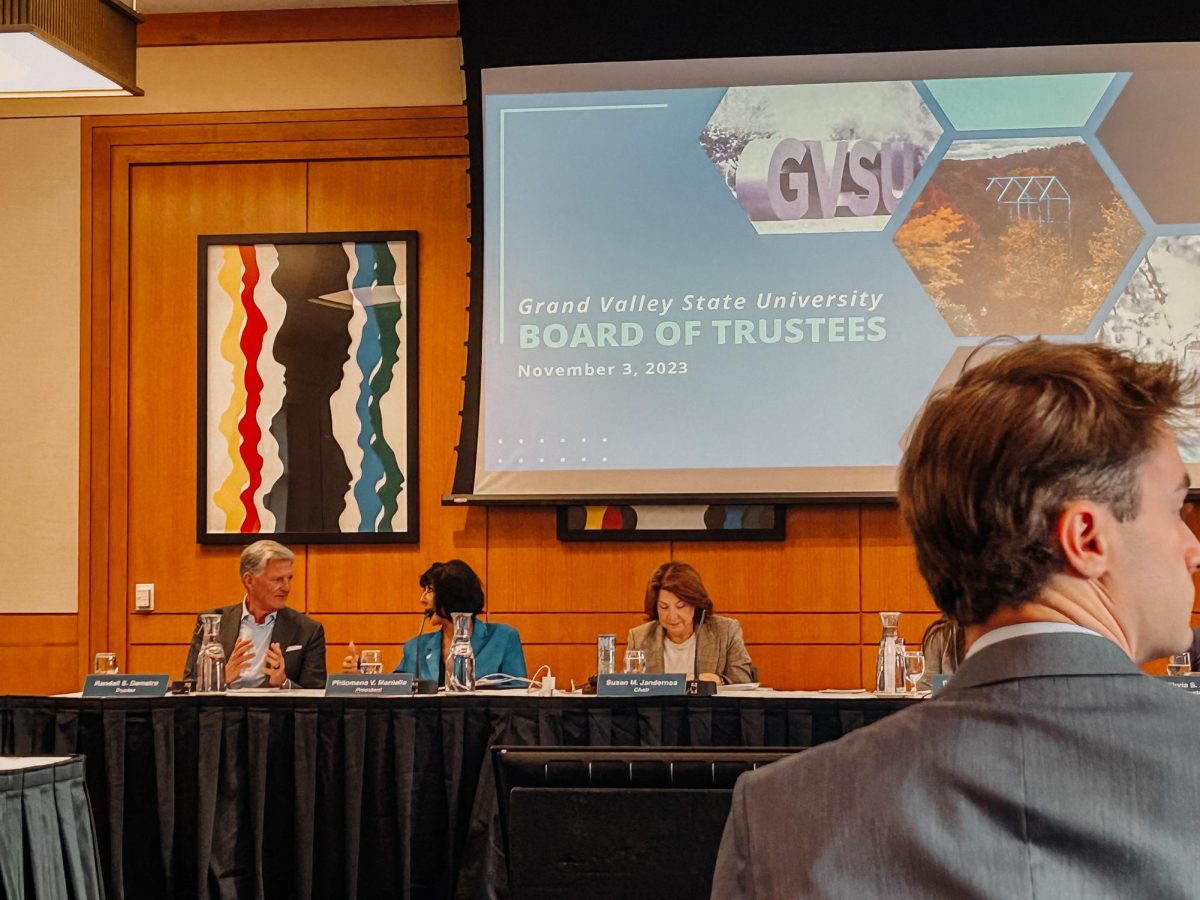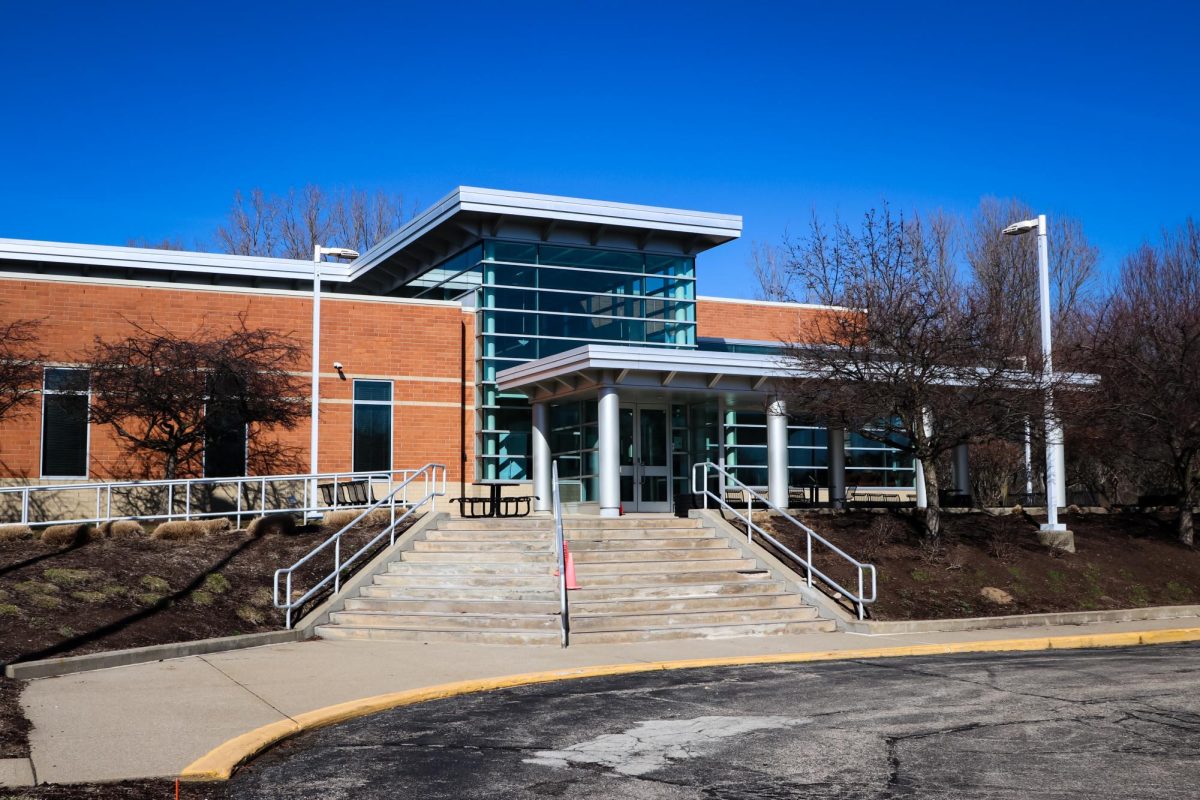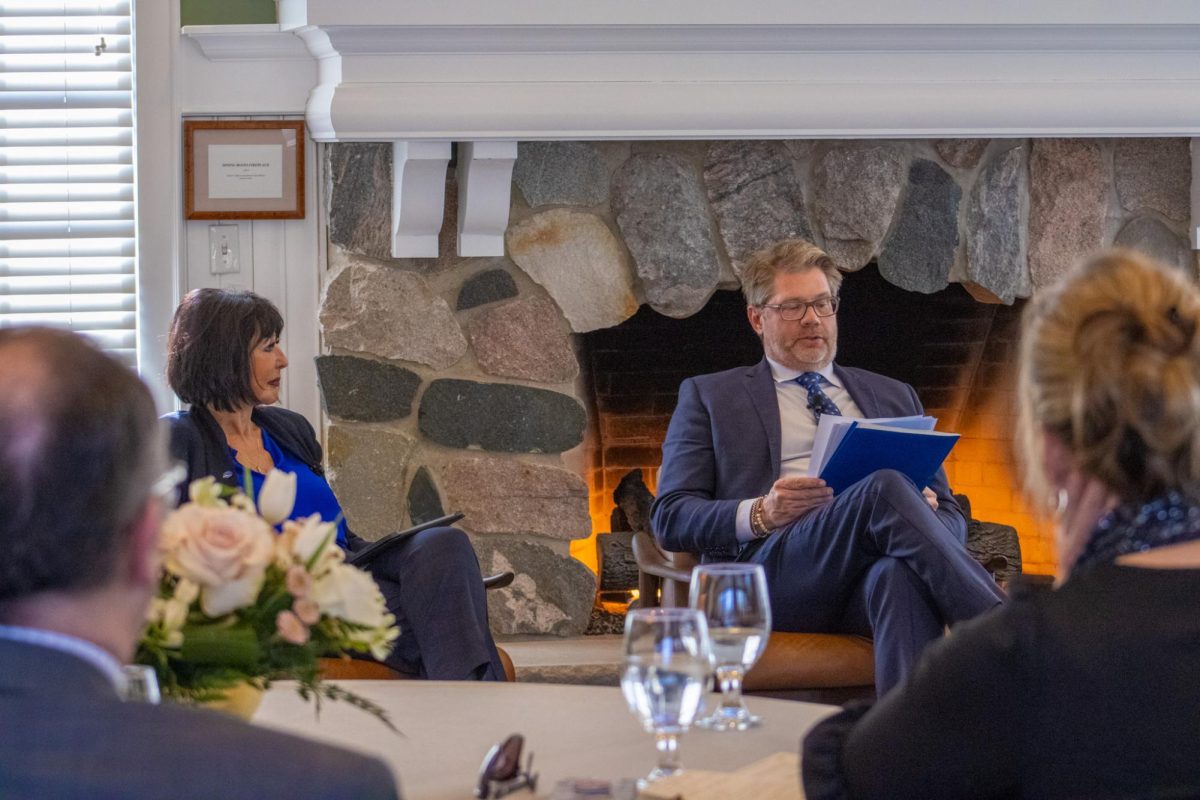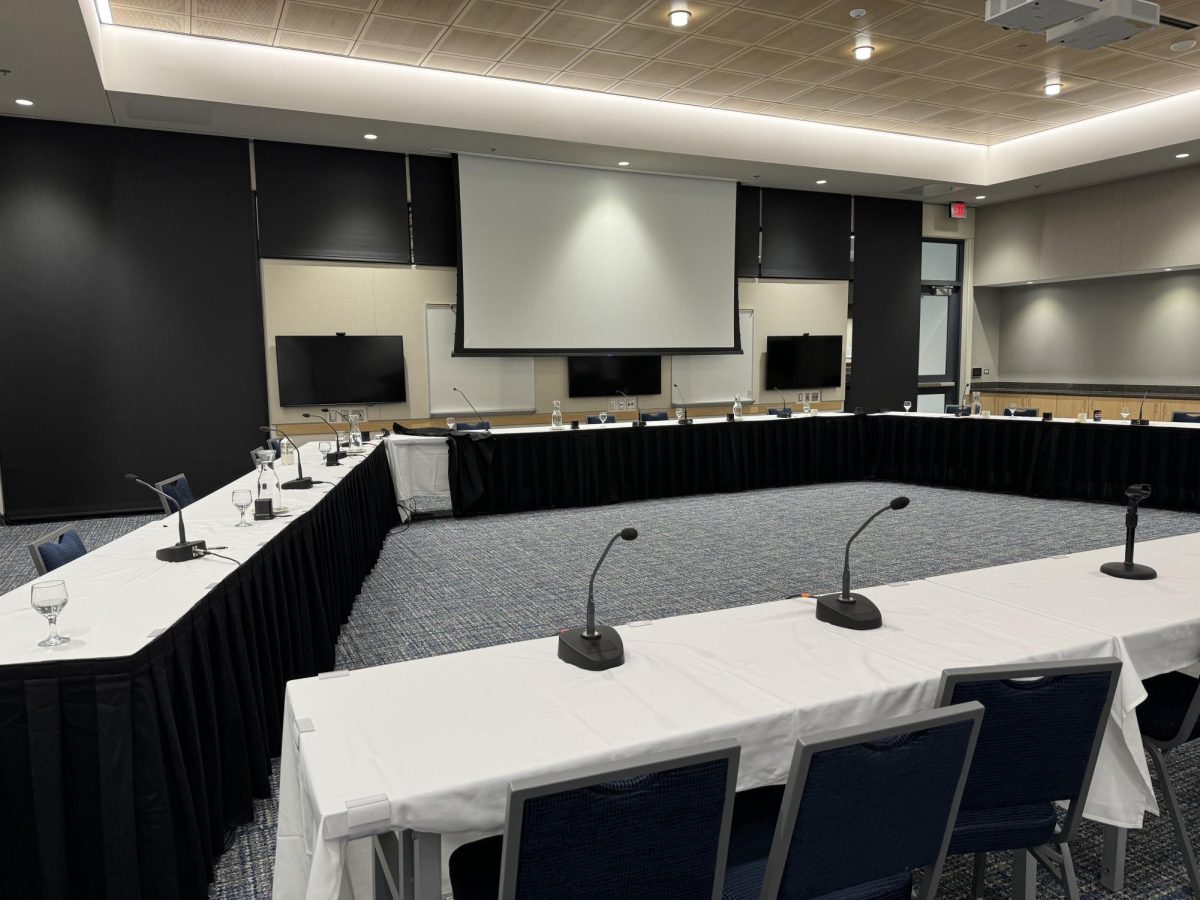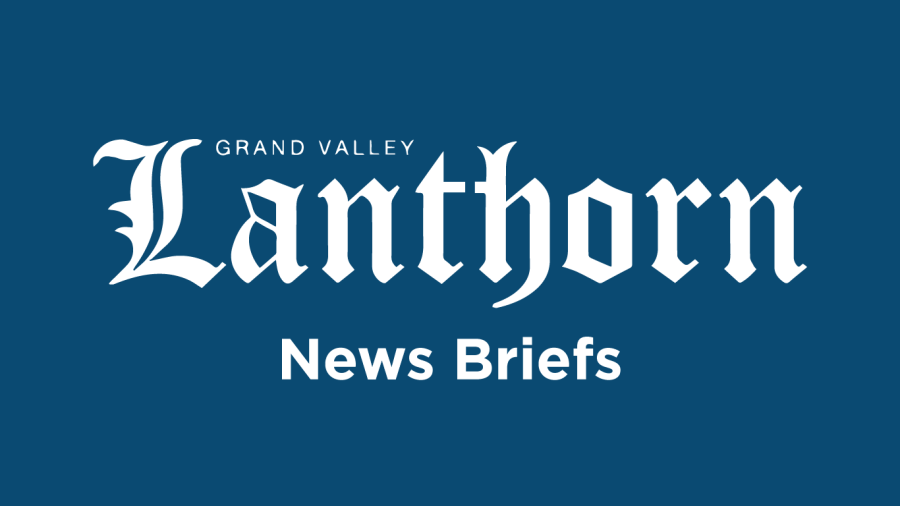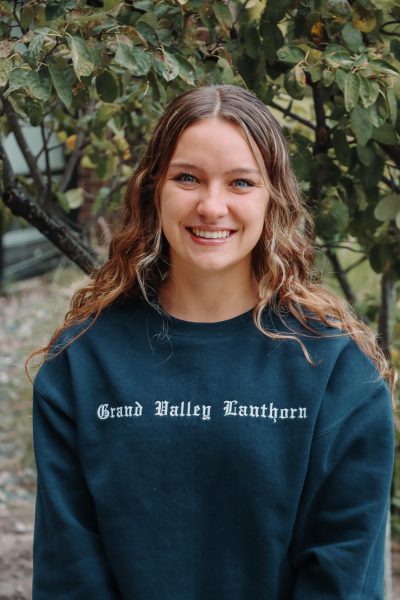Grand Valley State University’s Board of Trustees (BOT) met on Friday, Nov. 3 to discuss and make decisions regarding some of the university’s colleges, the infrastructure and its future.
Some of the key points at the meeting included the separation of the Seymour and Esther Padnos College of Engineering and Computing (PCEC) into two separate colleges, one for engineering and one for computing, renovations to Lubbers Stadium and a presentation of GVSU’s housing and enrollment report.
The BOT’s decision to split the PCEC into two by fall 2024 was a plan attributed to the potential for the university to grow its capacity in the engineering and computing disciplines through opportunities and resources. The BOT said the change will be a “strategic investment” for the growing and in-demand fields.
“I think because it is such a widely recognized state need, I think we’ll draw more funding towards our initiative by standing up those more visible entities,” President Philomena Mantella said to the Grand Valley Lanthorn.
Additionally, the split creating the Padnos College of Engineering and the as-of-yet, unnamed college of computing could lead to potential new academic opportunities for students.
“I would expect that we’ll be able to expand some of the badges, certificates, perhaps some of the majors in the colleges to give students more options as we grow,” Mantella said.
Currently, PCEC has 94 faculty members, 27 staff and 2,405 students with a major, not including students with minors in those areas of study, falling under the college. The School of Engineering had 40 faculty, six staff members and 986 majors, Occupational Safety and Health has five faculty and 218 majors and the School of Computing had 49 faculty, three staff and 1,201 majors. The split would make for smaller colleges that could allow for more growth and expansion over time.
The BOT also announced the planned renovations to Lubbers Stadium include the addition of 19 men’s restrooms, 20 women’s restrooms, and two gender-inclusive, family bathrooms. The plan also includes an expansion of concessions on lower and upper levels intended to triple the amount of concession space and includes the implementation of an elevator to make the upper areas of the stadium more accessible.
The changes to the stadium are intended to be completed by the start of the fall 2024 football season.
This project is a “partial acceleration” of the Lubbers Stadium renovations that were part of the “medium term” on the Campus Master Plan, an outline of goals for the university spanning over 10 years. Greg Sanial, Vice President for Finance and Administration and Treasurer for the GVSU Board of Trustees, said funding for this project came from the “university reserves” and in the board documents, can be found as “strategic capital reserve.”
Mantella told the Lanthorn the decision to move a portion of the overall intended renovation of Lubbers Stadium forward was due to need.
“If anything becomes urgent, like we have to put in more bathrooms into the stadium, then they (portions of the Campus Master Plan) can, you know, move up on the list because it is a plan,” Mantella said.
GVSU’s 2023 Enrollment, Financial Aid and Housing reports were also given at Friday’s meeting. B. Donta Truss, the Vice President of the Division of Enrollment Development and Educational Outreach at GVSU, noted higher levels of overall enrollment and growth in diversity with an overall increase of students who identify as a person of color when giving the report.
Additionally, Truss presented a chart that showed housing increases where GVSU has an overall capacity of 6,172 and an occupancy of 6,309. Truss said the university is at a “102% occupancy” overall. This increase comes with higher enrollment and more students living in on-campus housing units than what the university has accommodated in the past.
“The master plan we did for the university didn’t go as deep in each of the areas, so Housing has now initiated their own master plan, you know, within the lines of what we built,” Mantella said to the Lanthorn.
There was no exact timeline given for the completion or initiation of GVSU Housing’s master plan, however, Mantella said the university plans to make housing renovations one of its first significant investments from the Campus Master Plan.
“The phrase is ‘raise and replace’ a building that’s older, you’ve got to accommodate the short term to get to the long term,” Mantella said.
Additionally, the BOT mentioned the capital outlay funding requested for Blue Dot Lab, recently approved by Michigan’s House and Senate and sent to Governor Gretchen Whitmer for approval. The funding request would allocate $30 million for the Blue Dot Lab project, which is part of the GVSU Campus Master Plan. The Blue Dot Lab would reshape the Eberhard Center on GVSU’s Pew Campus to create a space that would function as a tech center and house many university disciplines like computer science, data science and humanities.
The next GVSU BOT meeting is scheduled for Feb. 23, 2024.
